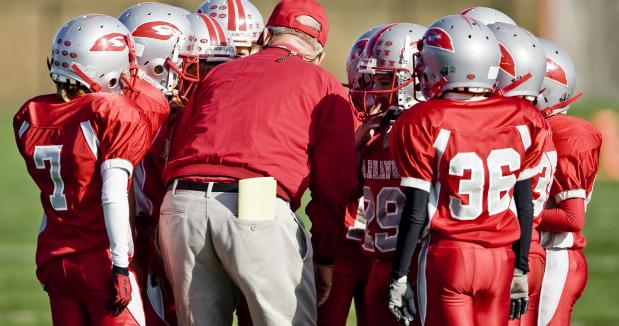“The continued play by a child who has sustained a concussion puts them at significant increased risk,” said Jacob Resch, associate professor at the University of Virginia’s Curry School of Education and co-author of the study. “To keep a concussed child from continuing to play requires immediate and accurate diagnosis.”
Every state but one requires youth athletes suspected of having a sport concussion be removed from play and not allowed to return without written clearance from a health care provider. But, according to Resch, many young athletes are playing without the elements in place needed to accurately diagnose a concussion during a game.
The article, “The Acute Management of Sport Concussion in Pediatric Athletes,” provides a clinical framework for the assessment, evaluation and management of pediatric sports concussions.
One key element: the presence of an athletic trainer or trained clinician at sports events.
“Diagnosing sport concussion requires specific training,” Resch said. “Think of it as a medical specialty that not necessarily all general practitioners or pediatricians are well versed in. There is a range of assessments used in diagnosing concussions and each of them requires specific training.
“The best person to have on a sideline is someone who has specific training in this area, most often seen in a certified athletic trainer.”
Young children often play sports in youth leagues, while adolescents often play in club or school sports. Currently, the only data collected on the presence of athletic trainers is on high school sports, where only 46 percent of high schools have a full-time athletic trainer. In many of those cases, a single athletic trainer is responsible for all of the school’s teams.
In other cases, schools or programs may share an athletic trainer or hire an athletic trainer or clinician to temporarily work a tournament or series of events.
“At this point, we just don’t know how many youth sports are being played with a certified athletic trainer or clinician trained in diagnosing concussions on the sidelines,” Resch said.
In the absence of someone specifically trained to diagnose and treat concussions, the role is often filled by an emergency medical technician.
“EMTs are a vital member of the sports medicine team,” Resch said. “However, EMTs may receive limited training in concussion assessment.”
In the article, Resch and co-author Dr. Jeffrey Kutcher of the University of Michigan reviewed the reliability and validity of assessment tools currently used to diagnose concussions. They recommend these tools be used alongside a clinical evaluation.
Another element needed to accurately and immediately diagnose youth sport concussions is a precursor to the first: taking a baseline measurement of the elements assessed to diagnose a concussion before a young athlete is injured. These elements include a balance test and recording the typical number of headaches a child has per month.
“One challenge in diagnosing concussions is that we are often measuring how a concussion manifests itself in other symptoms in the body,” Resch said. “Because no two children are alike and no two concussions are alike, it is difficult to say a particular score on a particular assessment always means a concussion is present or not.”
Knowing how a child scores on a balance test prior to play gives the individual making the diagnosis a sense of how far from that baseline an injured child is currently scoring. To know a child’s baseline often requires parents to seek a supplemental physical with a sports concussion clinician.
“Parents can certainly ask their pediatrician if they have expertise in diagnosing concussions,” Resch said. “If they don’t, they can often recommend someone who does.”
Preseason is a good time for concussion education, the authors suggested. Many states require student-athletes, their parents, coaches and administrators to participate in concussion education before the start of the season. However, those sessions vary significantly across ages, leagues and states.
Resch and Kutcher recommend that whatever the format, the content should include what signs and symptoms of concussion will lead to the player’s immediate removal from the field of play.
Though increased media attention has led to an added emphasis on the response to and management of concussions, the researchers noted that data is significantly lacking on youth sports concussions and called for more research.
“We need to continue to examine the data around concussions in youth sports and use that data to improve our efforts in education and recommendations for keeping young athletes safe,” Resch said.
ORIGINAL ARTICLE: http://www.healthcanal.com/brain-nerves/65450-study-immediate-diagnosis-of-concussions-better-protects-youth-athletes.html

